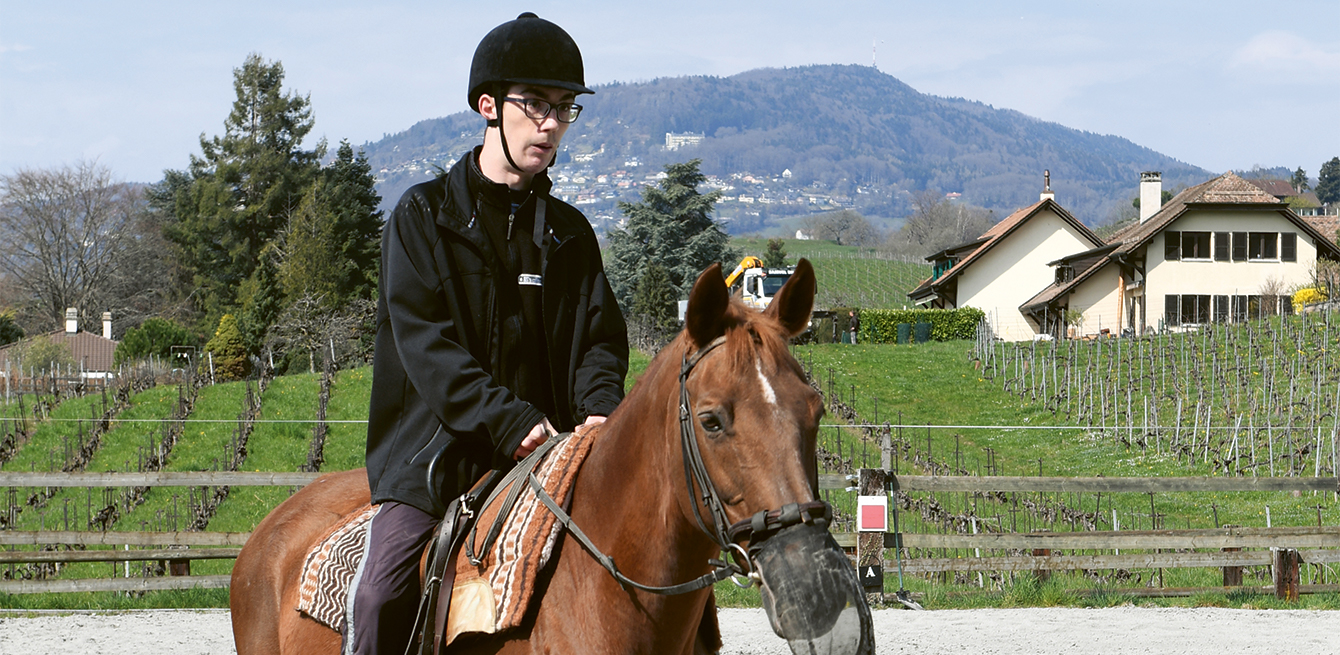
Geneviève Aerni’s son has a rare genetic disease. Genome sequencing brought the diagnosis.
“From his childhood, Bruno showed delayed motor and language development. His neurological disorders began at age 11 and worsened every year after that. For years, we didn’t know why it was happening. In April 2018, when he was 17, we found out that he had a genetic syndrome that doesn’t have a real name. My son’s condition has the code name ‘GNAO1-related movement disorder’. It was finally diagnosed at the CHUV’s Service of Genetic Medicine led by Professor Andrea Superti-Furga through genome sequencing. Using this method, doctors carried out a complete scan of Bruno’s DNA. It was then compared with thousands of DNA samples from people all over the world. That is when the CHUV team was able to establish a link with two similar cases.
Bruno was the first patient to be diagnosed with the disease in Switzerland and one of only 100 worldwide. I had never thought of the possibility of genome sequencing. The doctors’ investigations lasted many years. The wait was agonising for the family – due to both medical and administrative reasons – until all the routine neurological, genetic and metabolic tests could be carried out. Throughout all those years without a diagnosis, I kept asking for Bruno’s file to be shared so that it could be discussed with other hospitals and experts. Thanks to support from organisations such as UniRares (Swiss association for single patients), Proches aidants for caregiver loved ones and the Rare Disease Helpline, and my own initiative to appeal to the State Councillor, his care and diagnostic research was accelerated. Professor Superti-Furga, assigned to the case by the State Councillor and the management at the CHUV, suggested looking into the genome and sharing of Bruno’s medical records with other doctors and hospitals around the world. As sequencing is not included as standard diagnostic procedure approved in Switzerland, it was proposed as part of a development programme at the CHUV.
Family members experienced the diagnosis of Bruno’s disease differently. The genetic diagnosis provided Bruno’s sisters with more answers, especially about risks if they become pregnant. They do not carry the genetic variant that causes the disease, so will not pass it on to their children. But for me, the diagnosis helped me to pull myself together.
Not knowing what your child is suffering from leaves you lost in endless questions that worry you and monopolise your thoughts at all times.
Bruno is currently receiving treatment to stabilise his neurological condition. We also hope that the research being carried out on this gene in Switzerland and around the world will one day lead to finding a more specific drug for everyone with this disease and for my son.
As a member of UniRares and Proches aidants, I now know that my situation is the same as that of many families affected by a rare or undiagnosed disease.”